You’ve seen people say it time and time again: “Why doesn’t Hollywood make anything original anymore?” and “I’m tired of the constant reboots, sequels, and prequels.” So, when they finally announced that the Wicked movie was happening (it was in limbo for years), it was forced to reckon with a culture where it was going to be extra difficult to prove its value.
Wicked originally opened on Broadway in 2003; it’s a Wizard of Oz prequel that tells the story of how the Wicked Witch of the West and Glinda the Good Witch became the Witches of Oz. After 21 years on Broadway, the first film was finally released in theaters (it was the same length of the entire stage show); this year, Part 2 (Wicked: For Good) is also slated for release.
Wicked made $756 million on a $112 million budget, and based on the way it dominated the pop cultural conversation for over a year at this point, we can expect to see similar numbers for Wicked: For Good. But how did they manage to capture lightning in a bottle and maintain hype without generating franchise fatigue and general Wicked fatigue?
Wicked‘s marketing strategy lies in their ability to orchestrate a “slow-burn” campaign to build anticipation and cultural embeddedness across all demographics. They transformed Wicked into a multi-year-long event rather than a routine movie drop, similar to what they did with the Harry Potter movies years ago.
The thing is, what Wicked did is even more impressive given that it exists in a narrower pop-cultural space than Harry Potter. It’s a musical, it’s 20 years old, and it’s based on a movie made in the 1930s (which was, in turn, based on a book published in 1900).
Let’s break down for you exactly how they pulled this off.

Leveraging Existing Equity
To successfully sell tickets, the creatives behind the movie first had to consider how they were going to make Wicked relevant to a modern audience while honoring existing fans.
Assuring Artistic Quality Through Casting
When John M. Chu was announced as the director of both Wicked movies, fans were cautiously optimistic that he would respect the source material. This was a strategic choice, of course; Chu was known for having worked on In the Heights, another stage musical he transformed into a movie, as well as Crazy Rich Asians, which was a pop culture phenomenon when it came out.
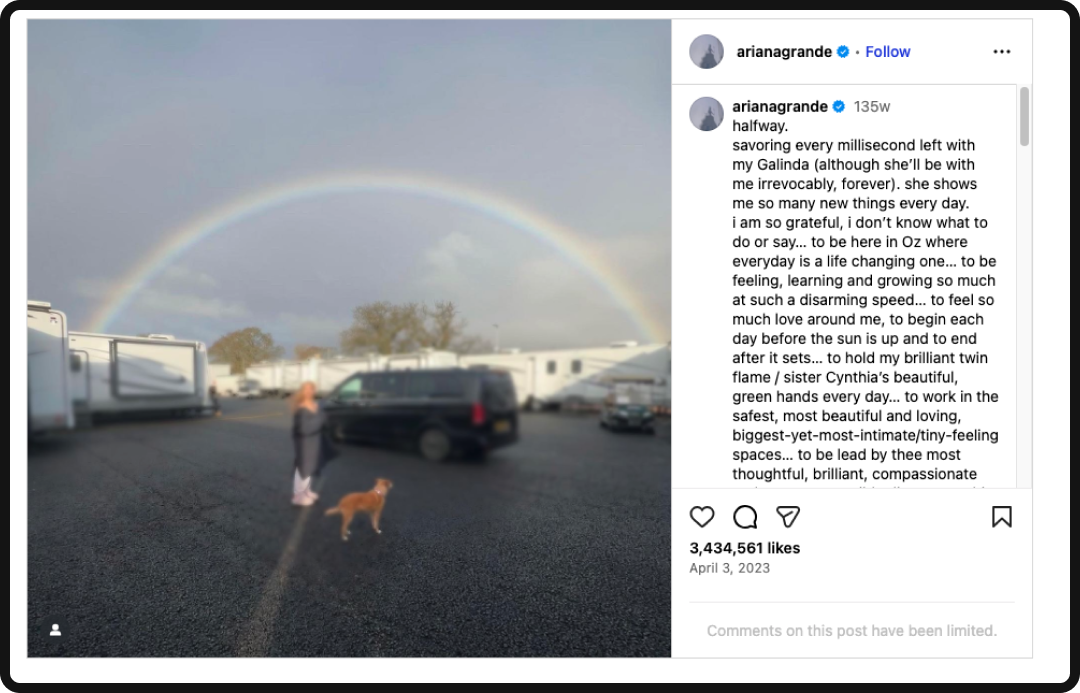
The true test, though, was announcing that Cynthia Erivo and Ariana Grande (respectively) would be playing Elphaba and Glinda, the two leads. Erivo is an established figure in musical theater, and Grande is a pop star with immense global reach. Both Erivo and Grande did their part to assure fans that they, too, would honor the source material by making announcement posts on Instagram and revealing BTS photos and videos throughout production that allowed fans to see the passion that went into making the film.
Honoring Wicked’s Visual & Thematic Foundation
Equally crucial was the marketing team’s careful stewardship of the show’s visual DNA. The campaign leaned heavily on the consistent use of iconic imagery, like Elphaba’s signature green skin and Glinda’s pink wardrobe, present in all early branding. These core visual cues satisfied established fans and provided immediate recognition and nostalgia. Critically, this emphasis ensured that the visual identity felt both nostalgic and cinematically elevated for the big screen, affirming that integral elements of the story would translate successfully from stage to screen.
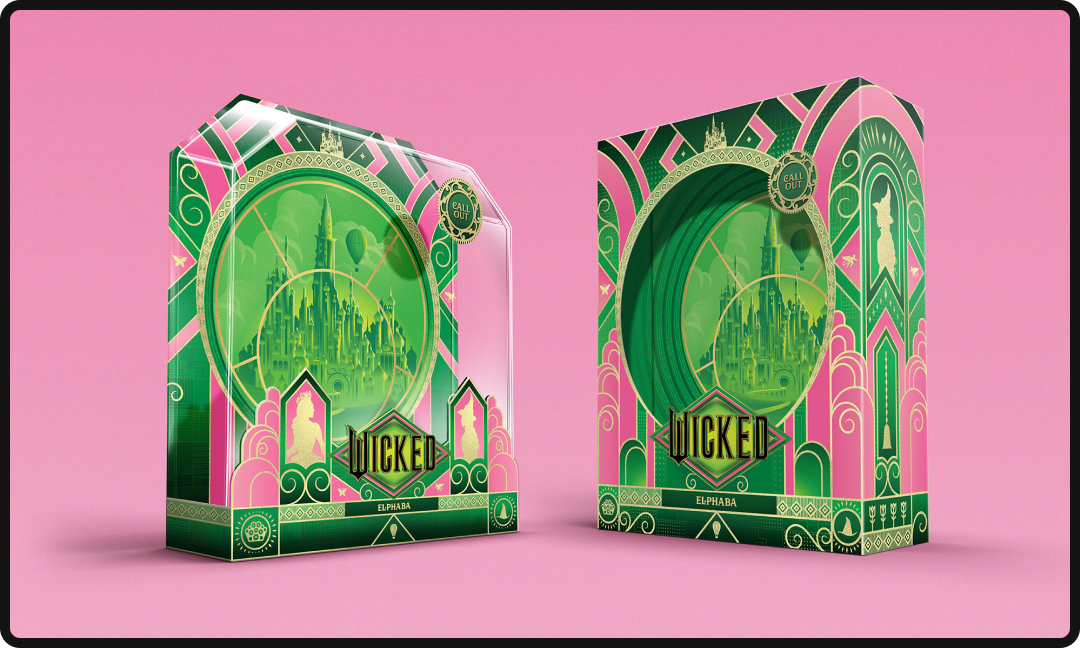
This tactic successfully framed the film not as a risky reboot in an overcrowded market, but as the long-awaited cinematic chapter of an enduring, popular myth. By confirming both the integrity of the cast and the visuals early on, the marketing team earned the right to deploy the large-scale “eventification” tactics that would follow, helping them navigate the “franchise fatigue” issue.
Building on Legacy: 3 Key Elements of Wicked’s Marketing Strategy
Everyone remembers the Wicked press tour last year, especially the viral “holding space” moment and Ariana Grande holding Cynthia Erivo’s finger. Wicked was everywhere; it felt like everywhere you turned you saw pink and green, as they partnered with over 400 brands.
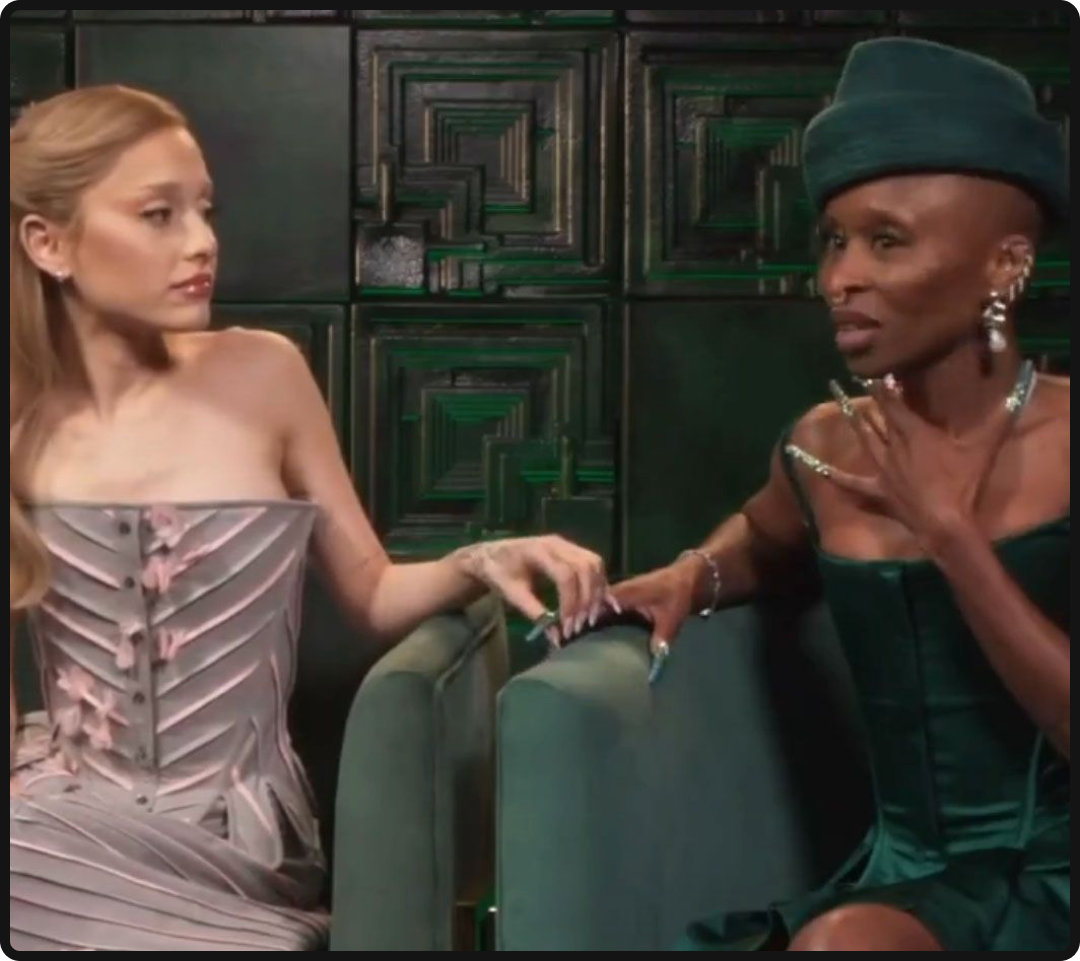
This massive undertaking ensured that Wicked wasn’t just advertised; it was integrated into daily life, appearing on everything from cosmetics to clothing lines. The sheer scale of their campaign transformed the film’s release into a genuine cultural event, pre-selling the movie to a global audience long before it even hit theaters.
But to do this without generating fatigue, their marketing team had to be strategic to avoid exhausting people before the movie came out; and we’re gonna outline how they did it.
1. Targeted Brand Partnerships
Instead of spearheading generic efforts like Wicked Happy Meal and being done with it, Universal launched a strategic campaign to secure the brand deals they knew would matter to their target audience. Michael Moses, the CMO of Universal, was interviewed about the Wicked marketing by Variety last year, and compared their marketing strategy to Barbie’s; it was similarly massive, and aimed to mainly appeal to women (as did both of these movies).
So if it felt like Wicked could be found just about anywhere last year, consider this: you were part of their target audience, and they knew where to find you. According to Moses, they invited certain brands to the studio in March 2023, over a year before the first movie was released, to show them that Wicked was a cultural moment they wanted to be a part of. This also demonstrated to brands (and also the public), that Wicked’s collaborations were deliberate and targeted; not just partnering every brand who wanted in.
This is why you’re gonna see Wicked partner with OPI nail polish, Owala, and Starbucks, rather than Wicked x McDonald’s or Wicked x Carhartt. The Universal marketing team wanted to serve Wicked products to a certain demographic of women, hoping they’d buy into the products and the movie.
The Hollywood Reporter has a running list of Wicked’s collaborations, and a common thread is that many of these products are beauty, home, and lifestyle collaborations; think makeup, skincare, hairbrushes, water bottles, socks, clothes, and more (one of the bizarre exceptions is its Great Value Mac n Cheese that either turns pink or green). Universal clearly understood the assignment with these collaborations, inserting Wicked into the spaces where modern women live: those that are feminine, yet practical.
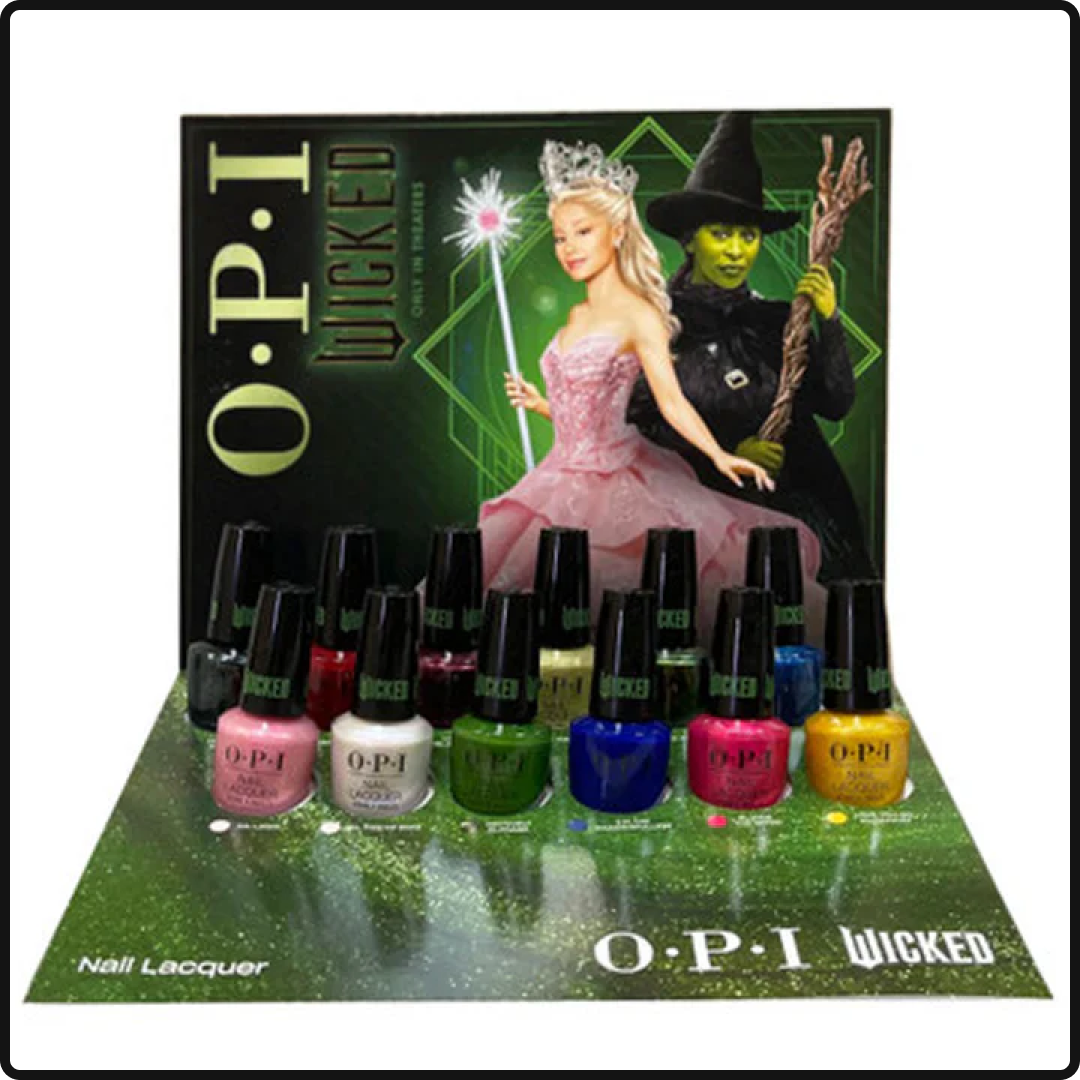
2. Strategic Pop Culture Placements
Still, it’s not like Wicked didn’t take stabs at marketing to the general public; just look at what they did with the Super Bowl. In February of 2024, they released the first ever trailer for the film as a Super Bowl ad, ending it with a sneak preview of Wicked’s most iconic song, Defying Gravity. By releasing the first trailer during a cultural moment such as the Super Bowl, Wicked cemented itself as a cultural moment of similar importance (plus, we know from the effects of Taylor Swift’s relationship with Travis Kelce on the NFL that cross-marketing works).
But it didn’t stop there; each subsequent trailer revealed just enough information to satisfy fans, but not so much that the mystery was spoiled. Moses said this was intentional, starting off the campaign without showing the characters singing (the most well-loved aspect of Wicked), and then slowly adding this element as the campaign progressed. After the Super Bowl, the Wicked team went to CinemaCon a few months later to show more footage to fans, and also released a featurette on NBC about how much Wicked means to the creatives working on it. That same year, the cast attended the Summer Olympics in Paris (donning their characters’ signature colors), with NBC running Wicked spots at the same time.

This year, NBC held a “One Wonderful Night” Wicked special, only a few weeks away from Wicked: For Good’s release in theaters. The event featured Grande, Erivo, and other cast members performing songs from both films, as well as new songs that have been created specially for Wicked: For Good. NBC’s goal of this event was to capture what audiences loved most about the first film to remind them that the second film is just around the corner (and will continue the magic).
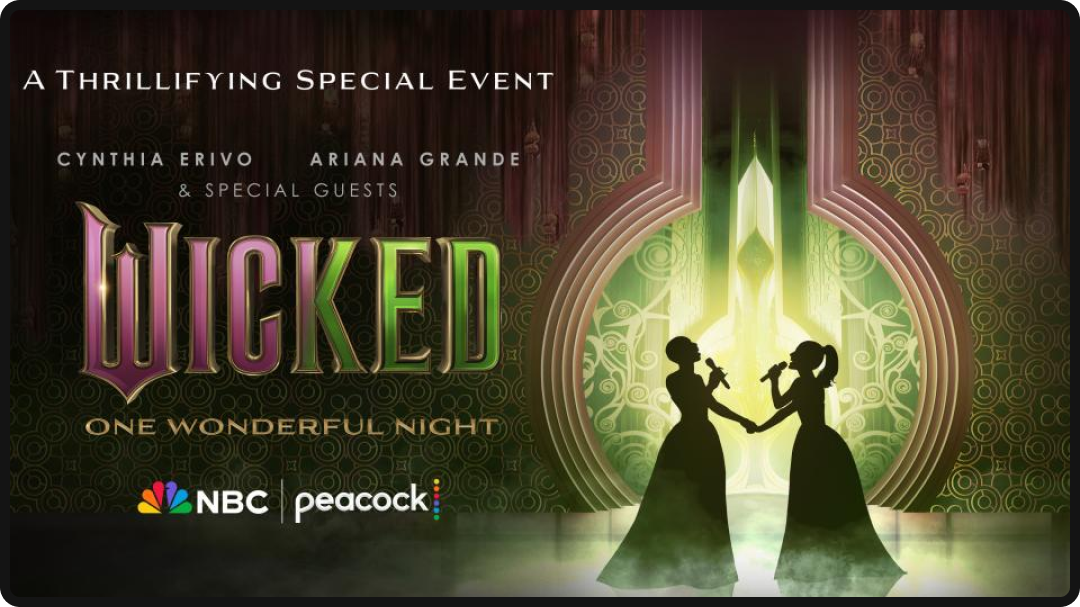
Everything about Wicked’s promotion, even its trailers and posters, was dropped at carefully calculated moments in time, often alongside major cultural events. They weren’t just dropped all at once, either; they were intentionally spaced out, building hype and (always) giving fans something to be excited about.
3. Social Media Community Ownership
Instead of only pushing official content, however, Wicked’s marketing strategy lent itself to sharing and remixing as a result of the highly quotable aspects of the musical, its press tour, and its other marketing efforts.
Everyone who was on social media last year remembers the cascade of Wicked user-generated content (UGC) that effectively amplified the film’s reach. For example, an innocuous quote from a press interview quickly became viral: the meme surrounding the phrase “holding space for the lyrics of Defying Gravity.” The phrase exploded across TikTok, Instagram, and X, where fans adapted the concept to various relatable situations.
This inserted Wicked into spaces where it previously wasn’t present in an organic and relatable way, a stark contrast to their paid campaigns. Their marketing team further fueled the UGC fire by releasing the movie’s soundtrack alongside the film, which encouraged people to recreate and riff on the film’s content in an authentic way.
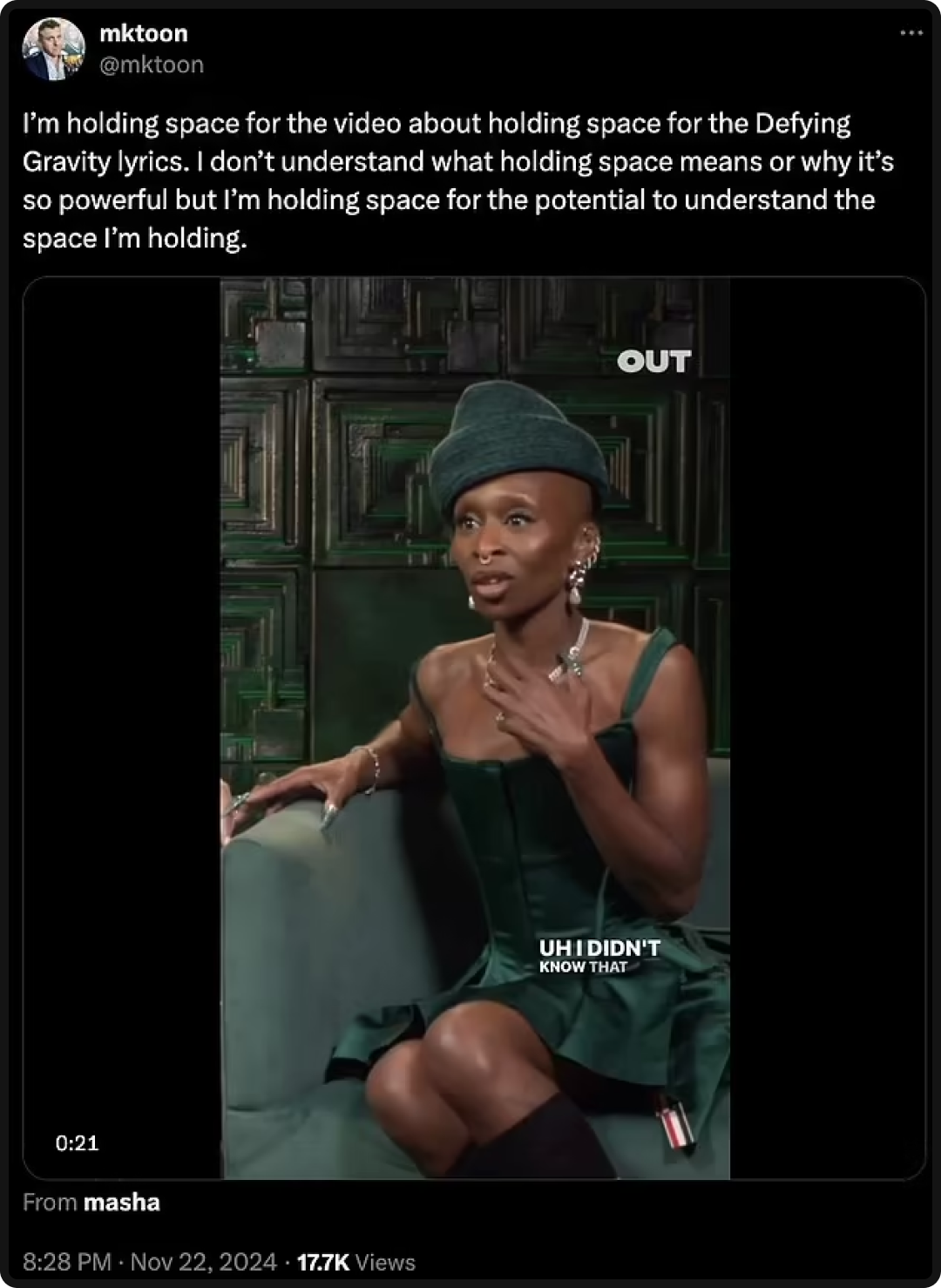
By playing into fan enthusiasm, the marketing team created an in-group language that signaled to the broader public that Wicked was a key part of the cultural zeitgeist. The willingness of the studio to let fans and digital creators run with jokes, remix sounds, and embrace the “camp” aspects of the film ensured that the conversation was authentic and perpetual in a way that only built on their paid advertising campaigns.
Honing in on an Example of Wicked Marketing: r.e.m. beauty
We mentioned a few general examples of how Wicked’s marketing broke the internet, but let’s discuss one of their most effective brand partnerships: r.e.m beauty.
r.e.m beauty is Ariana Grande’s beauty brand, so it was a no-brainer for it to get involved in the Wicked marketing blitz. For Wicked’s release, r.e.m released sets and products, which included lip products, eyeshadow palettes, blush, highlighter, and more. All of the products were themed in the iconic Wicked colors: pink and green.
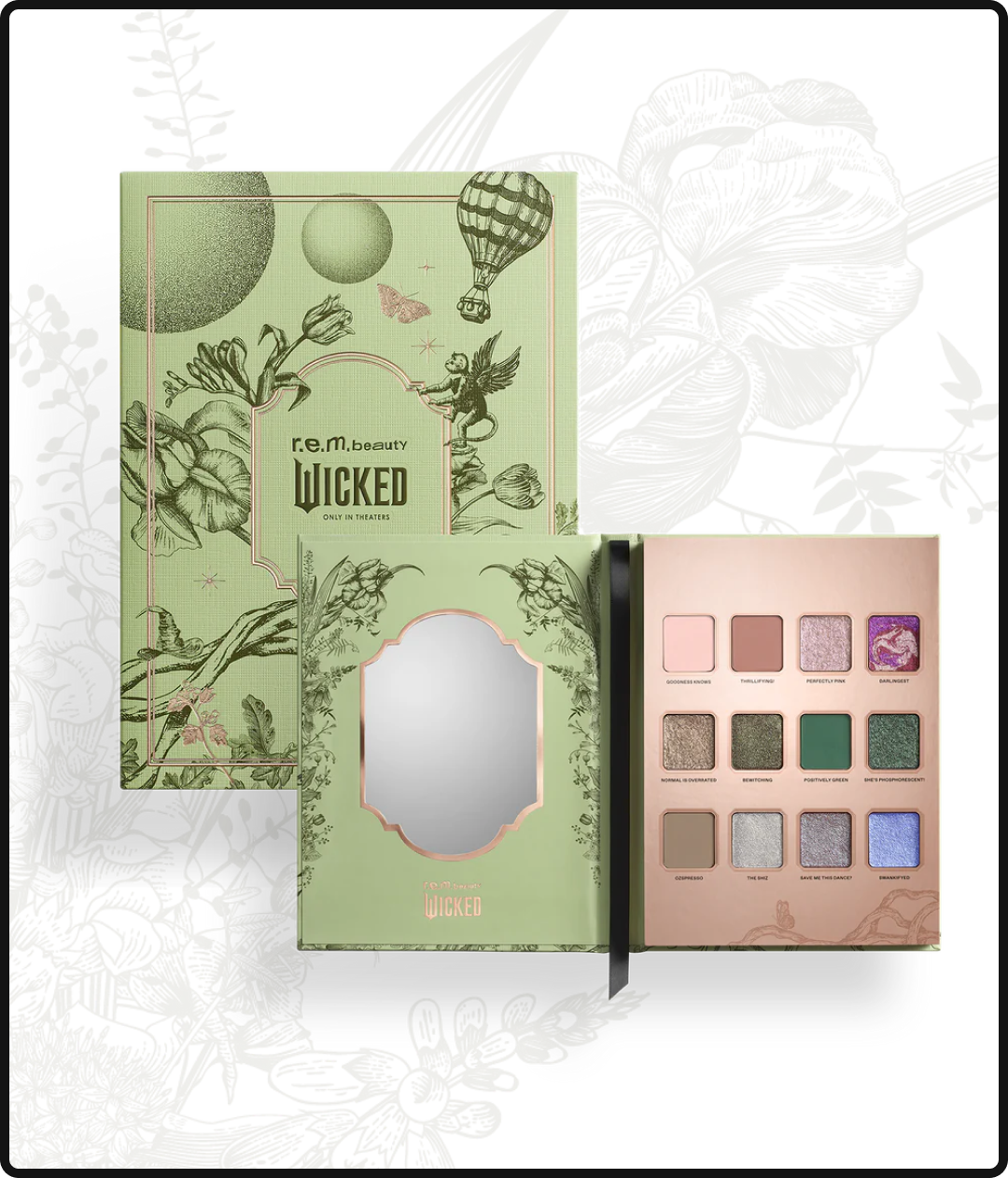
With Grande having a heavy hand in the production of this line as a massive Wicked fan and star of the movie, the collection played into key elements of the film without becoming over-the-top. The products r.e.m released were perfect for fans who wanted to buy Wicked-branded products that directly reflected the film’s themes, while still being legitimately usable and more subtle than a water bottle that reads “I Love Wicked” in bold print.
r.e.m followed up with another collection this year for the release of Wicked: For Good, which wasn’t just a repeat of what they put out last year. This year’s collection reflects the aesthetics and themes of the second part of the Wicked story, justifying its existence and encouraging those who bought from the first collection to add to it.
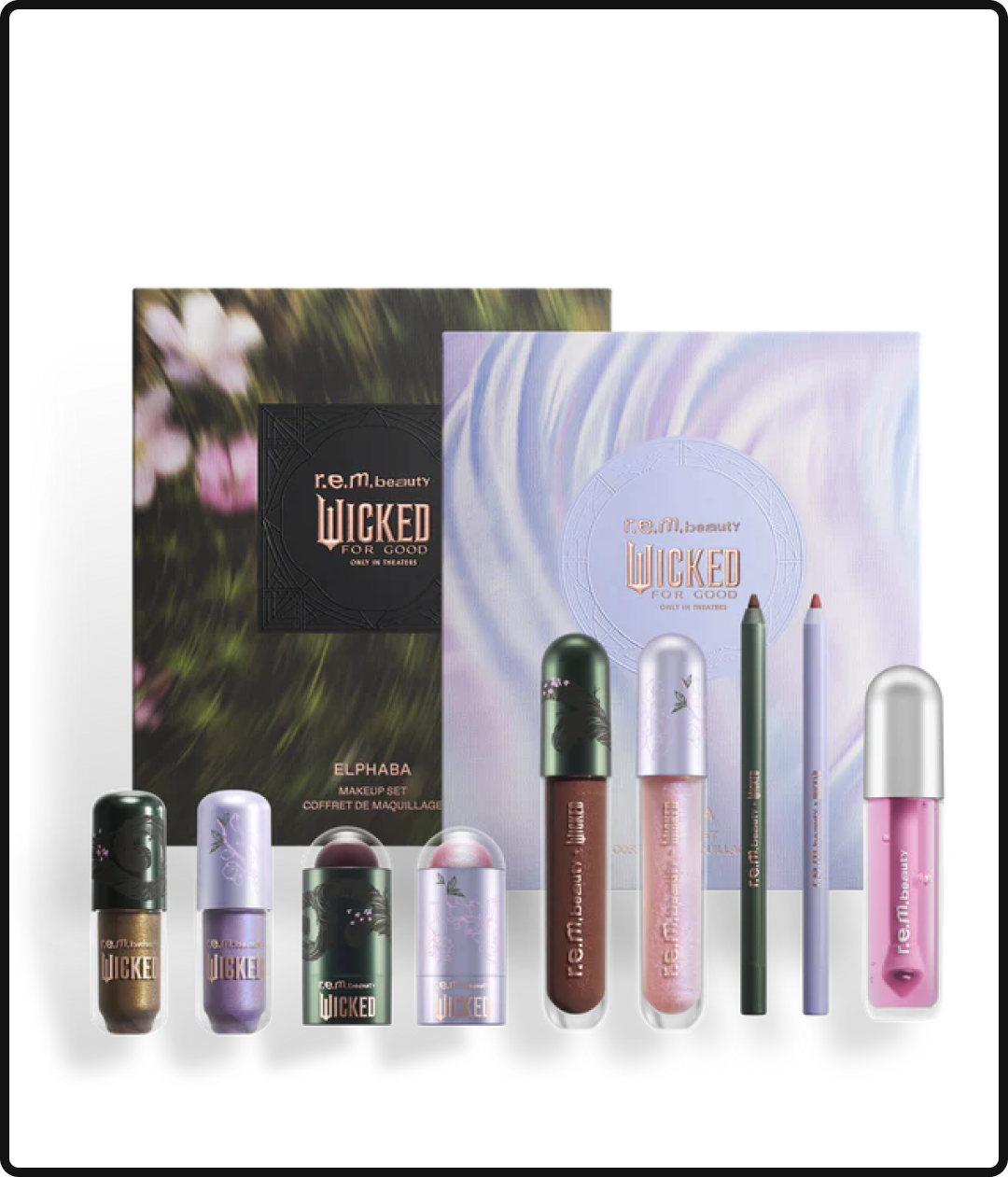
This aesthetic subtlety, combined with the obvious care that Grande put into the collection (unsurprising, with her personal attachment to the franchise), was a winning formula; r.e.m’s follow-up collection has “more than doubled the results of last year’s sold-out Wicked collection.”
How Much Did Wicked Spend on Marketing?
Variety asked Michael Moses point blank what the marketing budget was for Wicked, but he wouldn’t give an answer. However, rival studio executives gave an estimate of $150 million, which, if accurate, would be more than the production budget for the first film.
As mentioned, though, Wicked made $756 million at the box office; and this is just for the film’s first part. With Wicked: For Good’s box office opening estimates at $112 to $115 million, both films are on track to make a combined box office of over $1B.
So, if they really did spend $150 million on marketing, it’d be a drop in the bucket for them compared to what they made in return, and totally worth it.
From Broadway Success to Cultural Event
The Wicked campaign provides a definitive blueprint for adapting long-standing IP without triggering franchise fatigue (especially when it’s released over two parts). The strategy intentionally treated the film as a multi-year cultural event, hinging on these four factors: making casting and creative decisions that honor the source material, placing itself in cultural conversations while slowly revealing details, securing targeted partnerships, and allowing UGC to speak for the film’s quality and cultiness.
By mastering this orchestrated approach, Wicked successfully transitioned from a 20-year-old stage hit into a modern pop cultural phenomenon, a difficult task given the niche it existed within amidst franchise fatigue.






